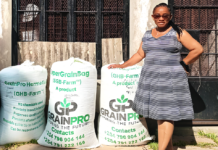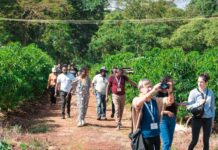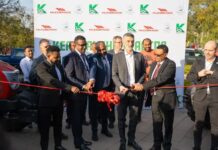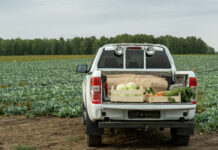As South Africa’s grain industry hosts one of its most anticipated events—NAMPO 2025—sustainability is no longer a buzzword but a deeply entrenched imperative for the sector.
This shift, according to Gert Breet, Sustainable Agriculture Lead at FNB Commercial, is the result of years of evolution in how the industry defines and approaches sustainable agriculture.
“Sustainability in the grain industry has actually come a long way,” said Breet in an interview ahead of NAMPO. “In the past, there was a lot of focus on no-till, etc., but it has since evolved to not only refer to your production practices but to also refer to financial sustainability, carbon footprint, and more.”
This broader, more integrated understanding of sustainability is expected to take centre stage at NAMPO 2025, where nearly 900 exhibitors will gather to showcase the latest advancements in agriculture.
“NAMPO is a big event in the grain industry because it is where all the latest technology, cultivars, and mechanisation are being showcased,” he explained. “This is the ideal platform to discuss issues pertinent to the industry.”
Among the most exciting developments are innovations in digital agriculture, artificial intelligence, and precision technology. These tools, according to Breet, are vital for improving input efficiency and protecting soil health—two pillars of sustainable farming.
“That is exactly the key to sustainability,” he said. “Farmers need to look after the soil to be sustainable. They are actually soil farmers and not grain farmers.”
Yet while the technological promise is clear, the path to implementation is not without its challenges. One of the most significant barriers remains the cost of adopting new, sustainable practices.
“Affordability is probably key,” said Breet. “New technology comes at a cost and adjusting practices do not necessarily lead to gains in the first year. It is therefore important for financial institutions to understand the industry and assist farmers to overcome the so-called J-curve.”
This is where financial innovation steps in, playing a critical role in bridging the gap between ambition and action. First National Bank (FNB), one of South Africa’s major agricultural financiers, is responding to this challenge with tailored products aimed at reducing risk and supporting long-term transformation.
“FNB launched an Agric Sustainability Loan last year at NAMPO focusing on risk mitigation tools,” Breet said. “Examples include shade-netting to mitigate hail damage in the fruit industry and solar finance for irrigation farmers. It is not an off-the-shelf product but rather a bespoke type of loan tailored to each individual client’s needs.”
These customised financial solutions will be highlighted again at NAMPO 2025, where FNB is expected to continue showcasing its support for the sustainability journey.
“It is a process,” said Breet. “And collaboration with the industry is important to reduce any possible barriers.”
She stressed that a long-term view from lenders is essential—especially during the transition phase when farmers shift from conventional to more sustainable methods, which can initially affect yields.
“Assisting farmers in that period where yields decline due to a switch from conventional practices to minimum tillage, as an example, is costly,” he noted. “Banks need to take a longer-term view on those transition farmers. A through-the-cycle credit view is important.”
Looking ahead to the 12–24 months following NAMPO, Breet remains confident that sustainability will remain more than just a topic of discussion.
“Sustainability in the agri sector is not a talking point anymore,” he emphasized. “Farmers have already begun embracing it and change is happening.”
As for her vision of what the South African grain sector should look like by 2030, Breet sees a future where sustainable practices are mainstream—not just environmentally, but economically as well.
“The vision is to have more farmers adapting to sustainable practices, but also to have them profitable as well,” he said. “The use of instruments like the FNB Agric Sustainability Loan can obviously assist with that, so farmers are encouraged to investigate these loans and, where it makes sense, to take them up and let FNB help them to achieve sustainable practices.”
With the momentum building ahead of NAMPO 2025, and with both technological and financial solutions increasingly within reach, the sector appears well-positioned to not just talk about sustainability—but to live it, farm by farm.








